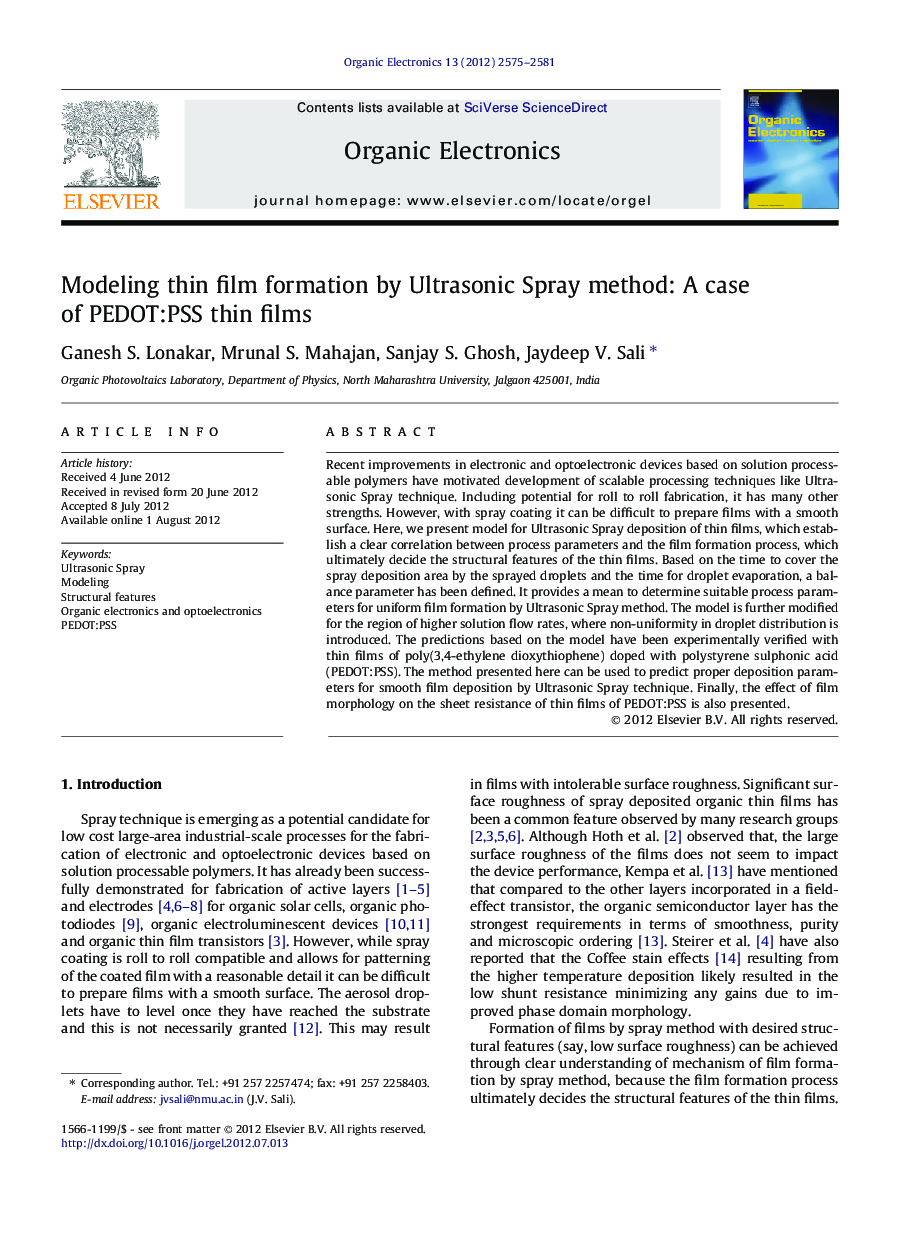| Article ID | Journal | Published Year | Pages | File Type |
|---|---|---|---|---|
| 1264043 | Organic Electronics | 2012 | 7 Pages |
Recent improvements in electronic and optoelectronic devices based on solution processable polymers have motivated development of scalable processing techniques like Ultrasonic Spray technique. Including potential for roll to roll fabrication, it has many other strengths. However, with spray coating it can be difficult to prepare films with a smooth surface. Here, we present model for Ultrasonic Spray deposition of thin films, which establish a clear correlation between process parameters and the film formation process, which ultimately decide the structural features of the thin films. Based on the time to cover the spray deposition area by the sprayed droplets and the time for droplet evaporation, a balance parameter has been defined. It provides a mean to determine suitable process parameters for uniform film formation by Ultrasonic Spray method. The model is further modified for the region of higher solution flow rates, where non-uniformity in droplet distribution is introduced. The predictions based on the model have been experimentally verified with thin films of poly(3,4-ethylene dioxythiophene) doped with polystyrene sulphonic acid (PEDOT:PSS). The method presented here can be used to predict proper deposition parameters for smooth film deposition by Ultrasonic Spray technique. Finally, the effect of film morphology on the sheet resistance of thin films of PEDOT:PSS is also presented.
Graphical abstractFigure optionsDownload full-size imageDownload as PowerPoint slideHighlights► A Model for thin film formation by Ultrasonic Spray method has been proposed. ► Balance parameter suggests suitable process parameters for smooth film formation. ► The model is also applied for the case of non-uniform droplets distribution. ► Effect of film morphology on sheet resistance of PEDOT:PSS thin films is presented.
